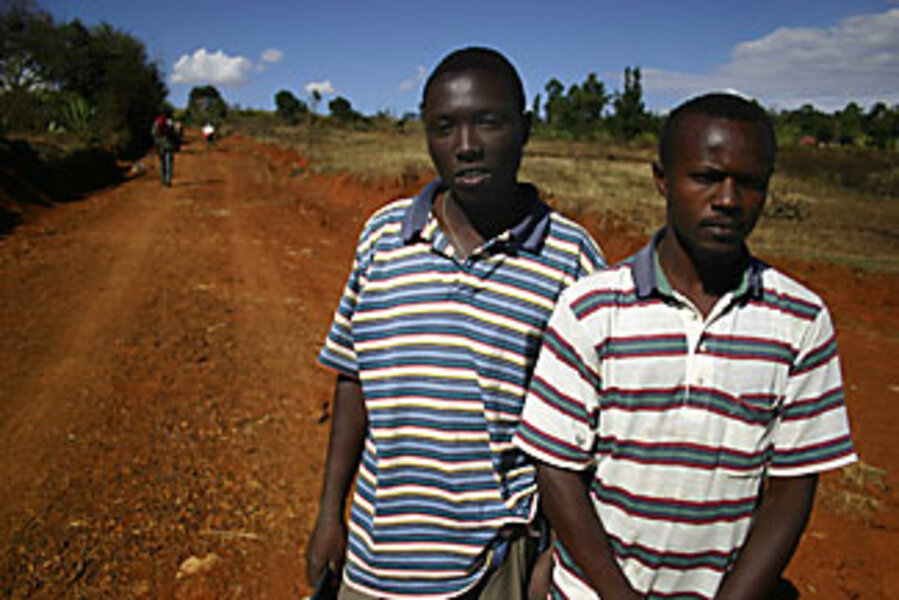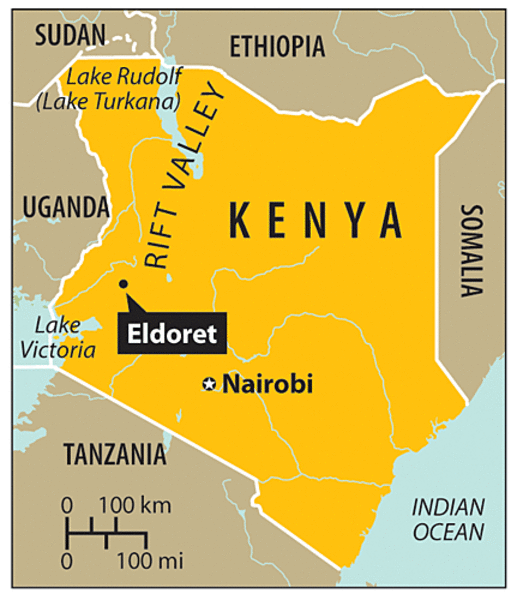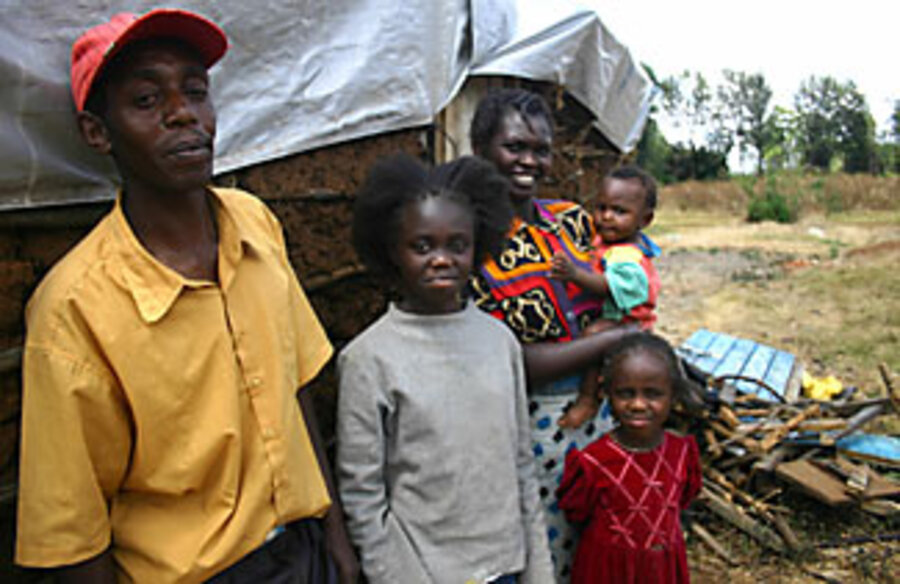Kenya's torn tribes rebuild trust with picks and shovels
Loading...
| ELDORET, KENYA
For these two Kenyans, Nathan Korir and Wanjiku Kingori, tribal reconciliation is not some airy concept. It's a road.
It's a road that has to be carved out of the hard red Rift Valley earth with picks and shovels, a road that has to be kept smooth in fair weather and foul. It's a road that must tie these two communities, the Kikuyus and the Kalenjins, together so that the ethnic violence of a year ago never happens again.
"Working on this project, we've found that we can talk together. At least we can see there is some peace going on," says Ms. Kingori, a 20-something daughter of a farmer, who still lives in a displacement camp, more than a year after fleeing from her home. "We have hope for life, even though they have made us homeless and jobless." She stops to wipe her eyes. "Eh, I think it will take a long time."
Together with hundreds of youths from the Kikuyu village of Yamumbi and the Kalenjin village of Kapteldon, Kingori and Mr. Korrir have been building that road for nearly a month, paid for and directed by the Roman Catholic archdiocese of Eldoret, a town that came to symbolize Kenya's horrific bout of ethnic slaughter last year.
The road project will facilitate commerce between the villages. But it's also one of the few successful efforts at reconciliation in a country that was torn apart when a tight presidential election degenerated into open ethnic warfare.
Today, a year after a power-sharing deal brought sworn political enemies together into a coalition government, it is projects like this that gives Kenyans hope that they can rebuild their lives and livelihoods.
In fact, many communities like Eldoret have seen precious little reconciliation. Displacement camps for the mainly Kikuyu victims of last year's rampages have been closed down, but new ones have sprung up alongside police stations, in hopes of better safety. Yet despite the massive effects on the country – including a food shortage partly blamed on the displacement of tens of thousands of Kenyan farmers during the peak planting season – Kenya's politicians have made little effort to normalize relations between communities and set the country on a path toward healing.
"To expect the Rift Valley to heal in a matter of months is quite unrealistic, perhaps that healing will take generations," says Rashid Abdi, an analyst at the International Crisis Group, who studied Kenya's post-election violence last year. "But what makes me angry is that politicians and community elders are not doing enough to quicken that healing." After a year, it's clear, "bringing about national reconciliation is nobody's business."
The violence started within hours of the announcement of disputed results from the tightly contested Dec. 27, 2007 Kenyan elections. Both of the main candidates – sitting President Mwai Kibaki and opposition leader Raila Odinga – claimed to have won the election, and claimed vote fraud by the other side. The vote largely split along ethnic lines, and so did the violence, with pro-opposition Kalenjins, Luos, and Luhyas attacking pro-Kibaki members of the Kikuyu ethnic group.
Where's the government?
Joseph Ngaruiya was guarding his family inside a tiny Pentecostal church in the village of Kiamba on Dec. 31, when he heard the shouts of young men calling for revenge. They came by the thousands, and within minutes, they had thrown torches on the wooden walls of the church, quickly setting it ablaze. Mr. Ngaruiya barely had enough time to pull his children and wife out of the church window before the entire structure went up in flames. At least 36 people died in that blaze, one of the most horrific events of the two-month long violence.
As his wife and children rushed off, Ngaruiya found himself surrounded, and then hacked down by men with machetes and iron rods. Gravely injured, he was left for dead, but managed to survive.
All of this would be enough to send most people out of a village like Kiamba for good. But today, Ngaruiya has built a tiny hut on his land, just meters away from the Kiamba church, and he sells goods to his neighbors, Kikuyu and Kalenjin alike.
"These two communities can live together," says Ngaruiya. "Our neighbor there is a Kalenjin. Her children play with our children. We buy milk from them. If the government was wise, they would bring our communities together. If they want to give to my community, they must give to both communities, and that will bring us together."
But the government is not wise, says his neighbor, Helen Rono. A Kalenjin, Ms. Rono now supports her family by performing day-labor jobs for other farmers, now that her husband is awaiting trial for allegedly leading the attacks on Kikuyus.
"I can't get relief food, because people accuse me that my husband was involved in the attacks," Rono says. For her part, she blames the Kikuyus, whom she says were armed and threatening other tribes in the Kiamba area on the days before the church burning. Today, all the Kikuyus have returned to Kiamba, she says, but while she accepts their return, she finds it difficult to live surrounded by people who have sent her husband to jail.
"It is very painful," she says. "It's OK for them to return to their lands, but it's difficult to forgive some people who betrayed my husband for no reason."
Even without the support of government – which today is largely mired in corruption scandals and indecision on where to take the country – many Kenyans feel there is no alternative but to get on with their lives.
A slow return to normalcy
Pausing for a moment to rest from the work on the two-mile long road between the Kikuyu village of Yamumbi and the Kalenjin village of Kapteldon, David Mwangi says his family is taking slow steps to returning to their home. At present, David is the only member of his family living on the land, where he cultivates tomatoes and other vegetables when he is not working on the road project.
The interaction with Kalenjins has gotten easier with time, he says, but even now he finds it difficult to see his own cattle driven to water by the Kalenjin who stole them a year ago. It's also difficult to hand over his own tools at the end of the work project to the very men who stole them when he was forced to flee.
"They were told that Kikuyus were bad, and if they can prove to themselves otherwise, then progress can be made," he says. "We have hope. The youth were the ones who were used during the violence, and now when the youth work at such projects, they will be changed, and the next time something like this happens, they will make the right decisions."
• Tomorrow: Why reconciliation among Kenya's politicians is slow.








